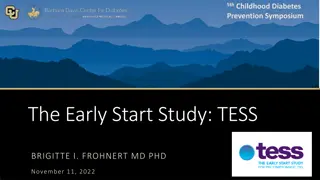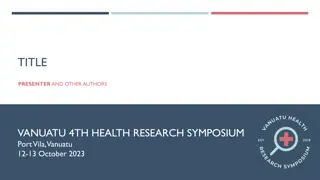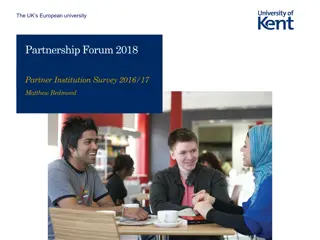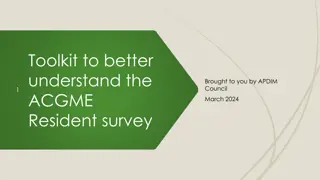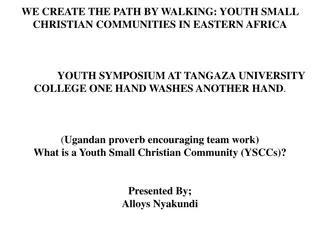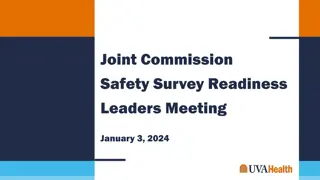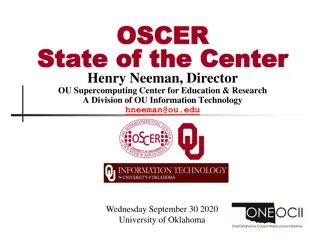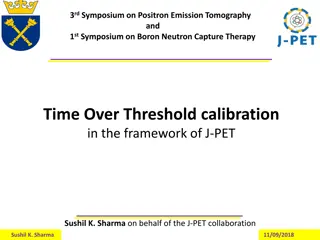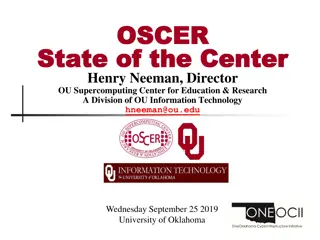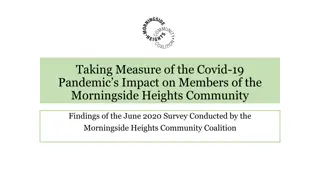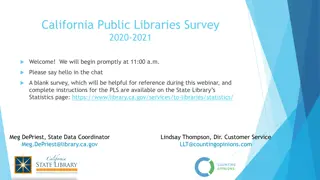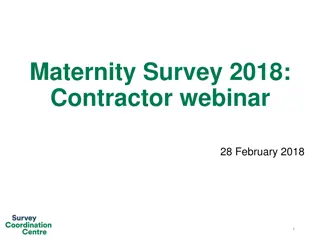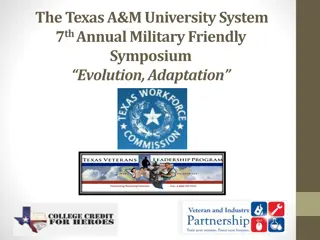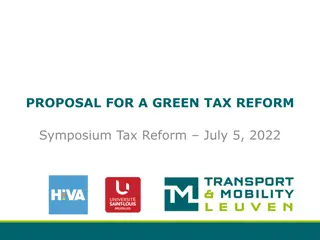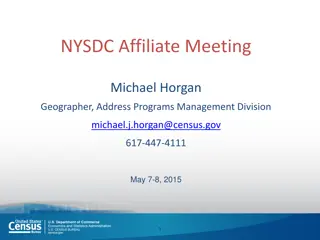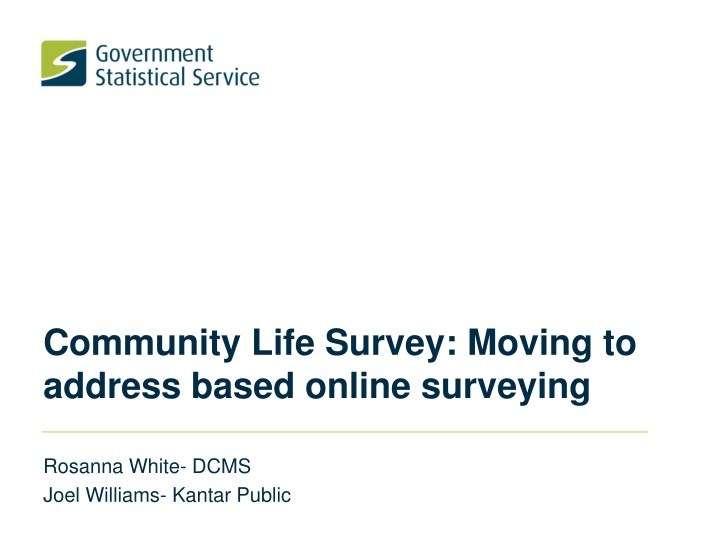
Community Life Survey Transformation
Explore the evolution of the Community Life Survey, from traditional face-to-face interviews to an innovative address-based online approach, enhancing data collection on community engagement and well-being in England.
Download Presentation

Please find below an Image/Link to download the presentation.
The content on the website is provided AS IS for your information and personal use only. It may not be sold, licensed, or shared on other websites without obtaining consent from the author. If you encounter any issues during the download, it is possible that the publisher has removed the file from their server.
You are allowed to download the files provided on this website for personal or commercial use, subject to the condition that they are used lawfully. All files are the property of their respective owners.
The content on the website is provided AS IS for your information and personal use only. It may not be sold, licensed, or shared on other websites without obtaining consent from the author.
E N D
Presentation Transcript
Community Life Survey: Moving to address based online surveying Rosanna White- DCMS Joel Williams- Kantar Public
Background The Community Life Survey (CLS) is a self completion survey of adults (16+) in England. The Survey is a key evidence source for government, covering community cohesion and engagement in England. Fieldwork conducted by Kantar Public.
Time line Citizenship Survey Commissioned by Home Office Online/postal testing begins Citizenship Survey decommissioned 2001 2006 2016-17 2017-18 2018-19 2013-14 2012-13 2010-11 Citizenship Survey Moved to MHCLG Community Life Survey Commissioned by Cabinet Office Move to DCMS, Survey moved fully to self-completion
What does the survey collect? Identity and social networks Your Community Civil Engagement Volunteering and charitable giving Social Action Loneliness and subjective wellbeing
How did the survey run in the past? Face to face household interview. One adult per household ( random adults approach) Conditional 5 incentive c.60% response rate and c.2,000-5,000 sample size
Why Change? Cost saving Increased sample size Increased survey capability Reduced risk of social desirability bias Removes need to cluster sample geographically
What do we do now? Around 30,000 addresses invited to take part online 4 adults (16+) can take part per household Sub sample of non-responding households given two paper questionnaires in second reminder letter Aim to achieve final sample size of c.10,000, including 2,000 respondents from ethnic minority groups
Login codes Contact details
Initial Testing Initial testing conducted between 2013-2016 by Kantar Public Full details of testing published on gov.uk https://www.gov.uk/government/publications/community-life-survey- experimental-online-survey-findings
Issues considered during testing Within household sampling Response rates and sample size Incentives Profile of web sample compared with face to face ? Change in time series/ responses
Key stages of testing Stage 2: Stage 1: April 2013-March 2014 September-October 2012 Full year and full scale test. 10 conditional incentive Same sampling method as stage 1 last birthday sample 4 incentive packages tested Small scale sample Stage 3: Stage 4: September 2013 July-September 2014 All adult within household sampling experiment Small scale sample Sample vs mode experiments
Within household sampling All adults approach Random adults approach ! fraud risk! For more info: https://www.gov.uk/government/uploads/system/uploads/attachment_data/file/466925/The_Community_Life_Survey_Investigating_t he_Feasibility_of_Sampling_All_Adults_in_the_Household_FINAL.pdf
Response rates Face to face Self-completion Online Additional due to paper 1%-3% 25-26% 2013-14 61% 27-28% 18% 1% 2014-15 59% 19% 17% 8% 2015-16 61% 25% 15% 6% 2016-17 - 21% Source: https://www.gov.uk/government/uploads/system/uploads/attachment_data/file/631932/Community_Life_Survey_- _Online_Paper_Estimates_Technical_Note_2016-17_FINAL.pdf
Sample size Face to Face Self-completion Online Paper 9,387 828 2013-14 5,105 10,215* 2,226 97 2014-15 2,022 2,323* 2,233 1,023 2015-16 3,027 3,256* 7,365 2,891 2016-17 - 10,256 *collected for methodological purposes Source: https://www.gov.uk/government/uploads/system/uploads/attachment_data/file/631932/Community_Life_Survey_- _Online_Paper_Estimates_Technical_Note_2016-17_FINAL.pdf
Testing Incentives Response rate (%) by incentive 70 60 60 50 39 40 35 31 27 30 20 10 0 No incentive Conditional 5 incentive Conditional 10 incetive Unconditional 5 incentive Conditional 5 incentive Web/ postal Face to Face Source: Kantar Public: Investigating the viability of moving from a face to face to an online postal model https://www.gov.uk/government/uploads/system/uploads/attachment_data/file/466921/Investigating_the_the_viability_of_moving_from_a_fa ce-to-face_to_an_online_postal_mode_FINAL.pdf
Profile of self completion sample compared with face to face Higher concentration of: Those who use the internet everyday Home owners 45-75 year-olds Higher earners Degree educated Lower concentration of: Younger people Social renters Lived at address for less than a year First language not English Source: Kantar Public: Investigating the viability of moving from a face to face to an online postal model https://www.gov.uk/government/uploads/system/uploads/attachment_data/file/466921/Investigating_the_the_viability_of_moving_from_a_fa ce-to-face_to_an_online_postal_mode_FINAL.pdf
Sample breakdown by age group 0 10 20 30 40 50 60 70 80 90 100 Population 15 17 26 22 11 10 Face to face 11 14 26 25 14 10 Online only (random adults) 7 13 28 31 15 6 Web and Postal (random adults) 6 12 26 30 17 8 Web and Postal (All adults) 9 15 25 26 16 9 16-24 25-34 35-49 50-64 65-74 75+
What have we done to t address imbalance? All adult approach reduced under-representation of younger people Target postal paper questionnaires Ensure paper versions available to all on request Boost sample in areas with higher BAME populations
What is the impact on the time series? Some difference in responses between face to face and self-completion Collecting test data alongside the face to face allows for longer time series Advise users against directly comparing self- completion and face to face data
Feeling of belonging to Neighbourhood & Britain Adults feeling they belong to Britain and their immediate neighbourhood; face-to-face and online/paper, 2005 to 2016-17 100 80 60 40 20 0 2012-13 2013-14 2014-15 2015-16 2016-17 Belonging to neighbourhood Face to face Belonging to neighbourhood online/paper Belonging to Britain face to face Belonging to Briatin Online/paper
Well-being Average rating of well-being; face-to-face and online/paper, 2012-13 to 2016-17 10 10 8 8 6 6 4 4 2 2 0 0 2012-13 2013-14 2014-15 2015-16 2016-17 2012-13 2013-14 2014-15 2015-16 2016-17 Satisfaction Worthwhile 10 10 8 8 6 6 4 4 2 2 0 0 2012-13 2013-14 2014-15 2015-16 2016-17 2012-13 2013-14 2014-15 2015-16 2016-17 Online/paper Happiness Anxiety Face to face
Charitable Giving Proportion who gave to charity 4-weeks prior to their survey; face-to-face and online/paper, 2005 to 2016-17 100 80 60 40 20 0 2012-13 2013-14 2014-15 2015-16 2016-17 Face to face Online/ Paper
Looking forward Continue to build on knowledge of mode and sample effects Maintain/increase response rates Keeping up to date with best practice Keeping up to date with technology
Any Questions? Useful links: Community life 2016/17 publication documents: https://www.gov.uk/government/statistics/community-life-survey-2016- 17 Previous publications and testing documentation: https://www.gov.uk/government/collections/community-life-survey Department website: https://www.gov.uk/government/organisations/department-for-digital- culture-media-sport Contact details: Rosanna.white@culture.gov.uk



